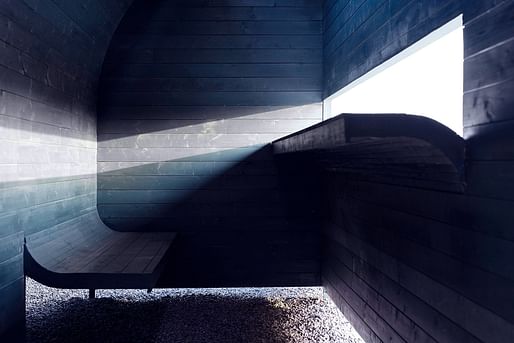
A groundbreaking new exploration of the physical elements of interiority comes to us in the form of an all-black wood pavilion by LIN Architecture in China's Jiangsu Province.
Labeled as a “space experiment” and located near the river on Jiangxin Island in Zhenjiang, the design forgoes functional elements to instead focus on a triad of ergonomics, proxemics, and behaviorology.
“The scale of human behavior is one of the concerns of this project. Research on the behavior of different people is a very good design resource for architects. By observing and understanding the behavior of people, designers can discover all kinds of possibilities of space,” its creators said, adding that “breeze, sunshine, the sound of waves, drizzle, sweet osmanthus fragrance, affecting feelings, perceptions, touch, hearing, [and] visual elements” were the true materials of their design.

(One should note that a well-balanced, sensory-laden interior creates an ideal circumstance for imagination as outlined by Gaston Bachelard in the Poetics of Space.)
“Human behavior, such as sitting, squatting, lying down, meditating, listening, peeping, wandering, overlooking, and even staring, is the form of space,” the group’s statement reads finally. “The act of light, the rising of the sun, the setting of the sun, the passing of the last light, the coming of the lamp, the illumination, is a dialogue between space and time. The surrounding environment, sea breeze brushing, leaves rustling, frogs chirping, cicadas singing, is the medium of dialogue between people and space.”
The project was realized earlier this month at a total area of 50 square meters (538 square feet). Additional images can be viewed below.
1 Comment
Ok, specifically how does the geometry of the space imply or suggest these aspects of imagination?
Block this user
Are you sure you want to block this user and hide all related comments throughout the site?
Archinect
This is your first comment on Archinect. Your comment will be visible once approved.